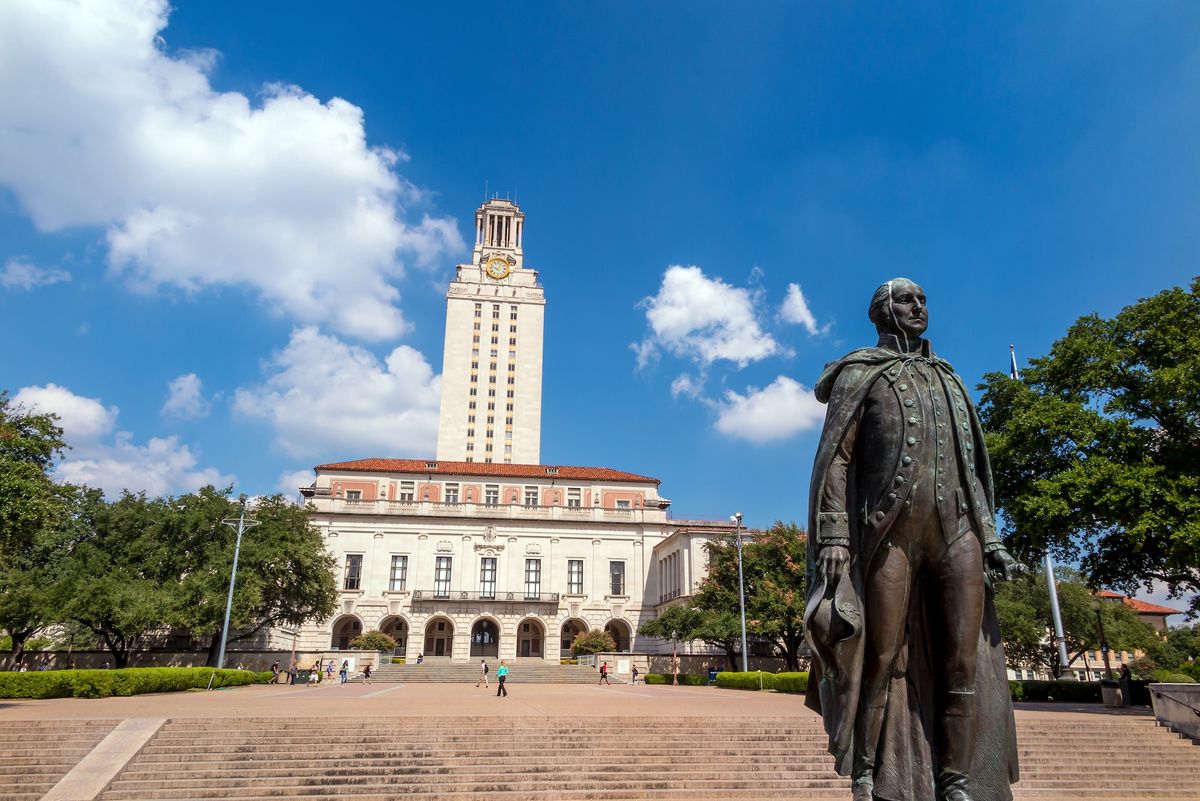How Difficult is Admission to the University of Texas, Austin for Out-of-State Students?
UT, Austin is considered one of the top universities in the country. Should you apply from out of state?

The University of Texas at Austin
The University of Texas, Austin is considered one of the top universities in the country. In fact, US News and World Report ranks it at number 30, tied with NYU and the University of Florida, and ahead of schools such as Georgia Tech, Boston College, Tufts University, and all University of California campuses except for Berkeley (17) and Los Angeles (15). Even though these rankings are highly subjective, this is still an impressive feat considering that there are approximately 2,500 four-year colleges in America.
As a state college, UT Austin is regulated by the State of Texas which imposes several requirements, including one by which all high academically achieving Texas high school students receive automatic acceptance. With a sizable increase in the number of in-state and out-of-state applications UT Austin has received, the State of Texas has now raised that automatic acceptance standard to the top 5% of Texas high school students. Prior to this, it had been 7%, and, later, 6%. Further, Texas state law dictates that 75% of UT Austin’s incoming freshman class must be made up of these high achieving Texas high school students, leaving only 25% of all seats to be filled by a combination of other in-state students, scholarship athletes, and other students applying from across the US and around the world. To break this down even further, 90% of its seats for incoming freshmen are reserved for in-state students, leaving only 10% (less than 1000 seats) for all others.
As a result, last year’s out-of-state acceptance rate was merely 12%, and this year’s will likely be far lower, since they had a 24% increase in applications, from 73,000 in 2024 to 90,000 in 2025. In fact, it is expected that the out-of-state acceptance rate will be down to around 8% for out-of-state students.
In a practical sense, this means that if you are applying to the University of Texas, Austin, as an out-of-state applicant, you have about the same odds of getting into some of America’s most competitive and highly ranked colleges including Cornell, UC Berkeley, UCLA, Amherst College, and Rice University. To put it another way, for every 100 out-of- state students who apply, approximately 92 will be rejected—daunting odds to say the least.
A National Trend
Even with a historic surge in tuition rates at four-year colleges across America, a greater number of applications and lower admit rates Is a consistent trend among the most highly competitive. In fact, the common application reports an 8% increase in submissions overall in 2025, to more than 4 million. Not surprisingly, acceptance rates at the eight Ivy League colleges for the class of 2028 (applying in 2024) were very low, ranging from 3.59% to 8.41%. This represents approximately a 25% decrease in acceptance rate among the eight Ivy-League institutions just in the past four years. The same trend Is occurring at many state universities across America, with a higher number of applicants and lower acceptance rates.
What is Driving These Numbers?
There’s likely no simple answer to this question. However, one fact does stand clear above all others: college graduates make significantly more money than non-college graduates. By some estimates, the difference can be as much as 50% or more. Of course, this can vary based on the specific field or occupation and other factors. Furthermore, college graduates from highly competitive colleges make more money on average than graduates from lesser-known institutions.
Conclusion
Students who hope to attend highly competitive colleges such as UT Austin (out-of-state) UC Berkeley, UCLA, Duke, Northwestern, MIT, Stanford, or any of the Ivy Leagues must present themselves as compelling candidates. Not only must they have stellar GPAs, test scores, and activities, they must present a unified portrait of a student who is likely to succeed both in college and beyond. That is why spending the high school years wisely is not only a great idea but a great investment in the future.
